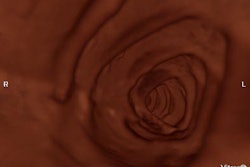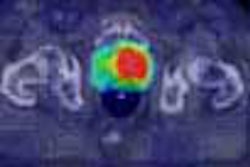ORLANDO, FL - The CT portion of PET/CT is an excellent method of precisely locating anatomic structures. In fact, according to a presentation Tuesday at the Academy of Molecular Imaging conference, the high diagnostic accuracy of cardiac PET is heavily dependent on performing accurate attenuation correction.
A group of researchers from the Cleveland Clinic Foundation in Cleveland presented the initial results of an ongoing study to determine an optimal CT protocol for cardiac PET/CT.
"Cardiology in PET/CT is ramping up," said Frank DiFilippo, Ph.D., a nuclear physicist with the Cleveland Clinic’s department of molecular and functional imaging. DiFilippo presented the report on his group’s progress in determining the most advantageous method for CT attenuation correction in hybrid imaging.
According to DiFilippo, attenuation correction is traditionally performed by a sequential transmission scan, requiring several minutes and done under free-breathing conditions. The respiratory motion is time-averaged in both the transmission and emission data, and the resulting attenuation correction is accurate because the geometries of both scans are well matched.
In the hybrid world of PET/CT, the CT images are utilized for attenuation correction, which is an attractive feature of the systems because CT scanning can be performed quickly without adding significant noise to the PET images from the system, DiFilippo said.
Still, there is a drawback to this with cardiac PET/CT, DiFilippo noted. Rapid CT imaging may cause a geometric mismatch -- a misregistration between the CT data and PET emission data that could cause inaccuracies in attenuation correction and potentially lead to an incorrect diagnosis, he said.
As a result, the Cleveland Clinic team has developed a slow CT protocol for its biograph Sensation16 PET/CT (Siemens Medical Solutions, Malvern, PA) for cardiac imaging in a hybrid system. The group has dialed down the rotation speed to 1.5 seconds for the 16-slice spiral CT system and has given it a minimal pitch of 6.4 mm per rotation table feed. This has enabled them to scan the heart in about 42 seconds, permitting the patient several breathing cycles.
The radiation dose is minimized, DiFilippo said, by setting the x-ray tube parameters to the lowest available settings, 80 kVp and 137 mAs.
"The estimated radiation absorbed dose is 3.6 mGy with an effective dose of 0.8 mSv," he said.
The group, which is conducting ongoing studies of the protocol, has conducted exams on 10 patients with the technique, DiFilippo reported. They have compared normalized polar maps for FDG cardiac studies acquired on both conventional PET systems and the institution's hybrid PET/CT system using the slower CT protocol.
The preliminary results are encouraging, and show a difference of less than 10% between PET and PET/CT in all myocardial segments. In addition to continuing work with the technique for 16-slice CT in PET/CT, the team will also be evaluating the protocol’s efficacy in single-, two-, four-, and eight-slice CT configurations as part of PET/CT systems, DiFilippo said.
By Jonathan S. Batchelor
AuntMinnie.com staff writer
March 31, 2004
Related Reading
PET/CT shows restaging power for head and neck tumors, March 30, 2004
PET/CT brings added value to pediatric oncology, February 27, 2004
Along with SPECT, PET and MRI find niche in myocardial assessment, October 21, 2002
Copyright © 2004 AuntMinnie.com




















